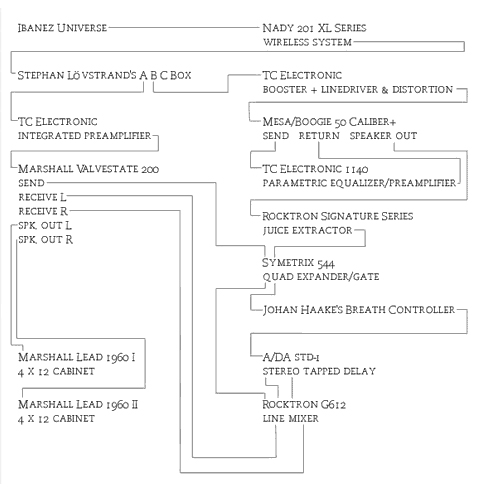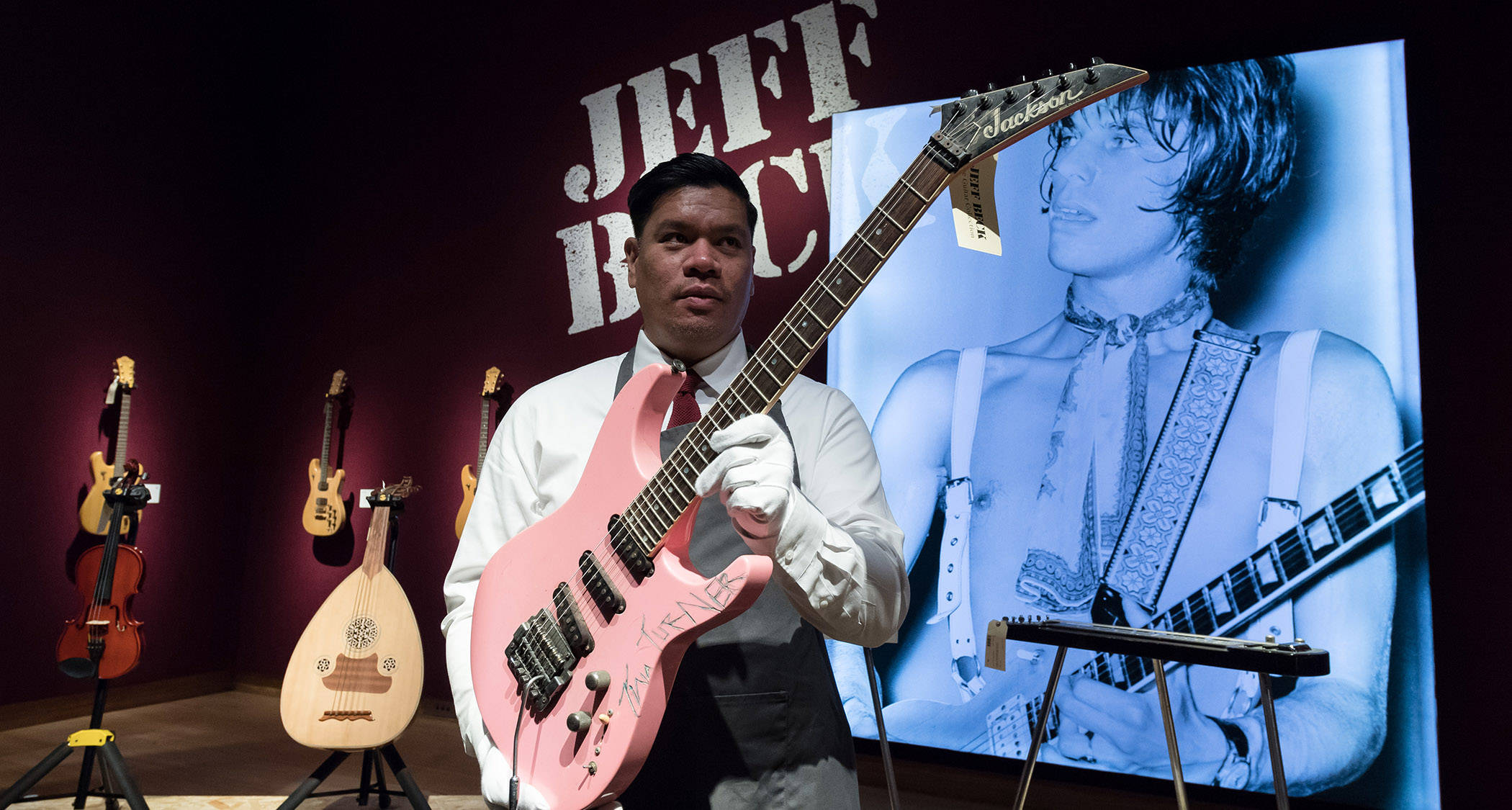Meshuggah Share the Secrets of Their Sound

Djent--an off-shoot of progressive metal that features heavily palm-muted, distorted guitar chords alongside virtuoso soloing -- is all the rage these days in the metal world, but let's not forget where it all started. Many of the sub-genre's leading bands will tell you the inspiration for their sound came from one band: Meshuggah. In the following interview, Meshuggah guitarists Fredrik Thordendal and Marten Hagstrom talk about their gear and how they create their brutal tones. Interview by Nick Bowcott
GUITAR WORLD: You both play seven-string guitars. How did you get into the instrument?
FREDRIK THORDENDAL: For as long as I can remember I’ve wanted to have a seven-string guitar so that I’d be able to play those really low notes, and then Ibanez finally came out with one.
MARTEN HAGSTROM: [laughs] Yeah, a disgustingly ugly guitar with flowers all over it [the original Steve Vai signature Universe model that came out in the late Eighties—GW Ed].
THORDENDAL: I bought one almost right away. I’ve had it since 1991 and it’s still my main guitar.
Those guitars must cost a king’s ransom in Sweden.
THORDENDAL: Yeah, you could buy a small car for the same amount of money. Lucky for me I got mine from the U.S. for something like one-third of the price I would’ve had to pay to get one in Sweden. My father was in America and bought it for me at the Sam Ash music store on 48th Street in New York City.
Are the Universes you use totally stock?
THORDENDAL: Yes, apart from the pickups, which we have dipped in wax to stop them from feeding back when we use them; we have to do that.
HAGSTROM: Totally! We both use fairly extreme amounts of gain, so the original pickups would feedback really badly before we had them waxed. Feedback is a very big problem for us because of the amount of gain we use. We can’t just pick up a guitar and go, “This is cool, we’ll use this on the road,” because we can’t. The first thing we have to do is wax the pickups. If we didn’t, all you’d hear when we plugged it into one of our rigs would be feedback.
Do you do the waxing yourself?
THORDENDAL: No way—we’d probably melt the whole pickup if we did. Instead we take them to someone who knows how to do it.
How many spare guitars do you take out on the road?
HAGSTROM: Believe it or not, on the last American tour we did, opening for Slayer [1999], all we had was our two main guitars and one spare guitar between the two of us, which was a six-string strung up like a seven-string but with the top E string missing! A while ago I did buy two other seven-string guitars, but then I ran out of cash, so I kept the one I liked the most and sold the others.
GW Do you ever drop the low B string down to A so you can play those “grunge approved,” one-fingered power chords?
HAGSTROM: No, we always tune down a half step, so our strings go [low to high] Bb Eb Ab Db Gb Bb Eb.
All the latest guitar news, interviews, lessons, reviews, deals and more, direct to your inbox!
What gauge strings do you use?
HAGSTROM: Not that heavy: .009 to 0.052.
What about amps and effects?
HAGSTROM: In the studio we both use Mesa/Boogie Dual Rectifier heads. Our live gear set-ups are completely different, though. I run my Ibanez into a Nady 605 wireless and then into a homemade A/B splitter box. The A channel is for my rhythm crunch sound and the B channel is for my clean sound. For my rhythm sound I go through a t.c. electronic preamp into a Marshall Valvestate Bi-Chorus 200-watt head [8200]. I then go out from the Marshall’s mono effects loop [Note: the 8200 head, which is no longer made, boasted two effects loops—Series (mono) & Parallel (stereo)—GW Ed.] into a Behringer Intelligate and then a Rocktron G612 line mixer before going back into the Marshall’s effects return. My clean sound goes from the splitter box into a t.c. electronic Compressor/Sustainer, a t.c. electronic Stereo Chorus and an Art DXR Elite multi-processor before going to the Rocktron line mixer. I then take the stereo outputs from the Rocktron mixer into the parallel, stereo effects return of the Marshall head and then out into two Marshall 1960 4x12 cabinets.
That’s quite a complex rig.
THORDENDAL: If you think Marten’s live rig is complicated, wait until you see mine! [laughs] Rather than try and talk you through it, here’s a diagram that will be much easier to understand [see FIGURE 1].

